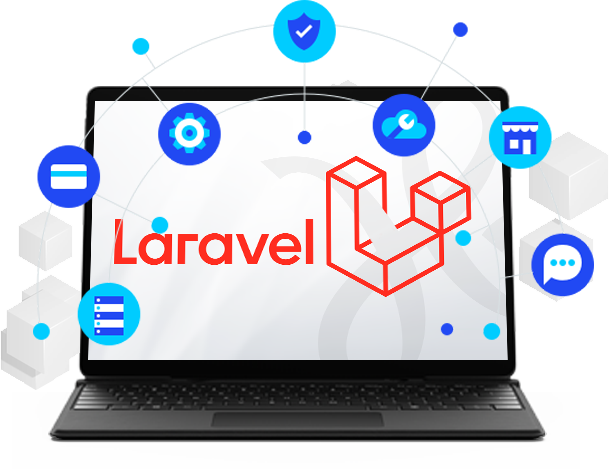
Request a Free Quote
Enquire Now or Call -+91 9988797174

Laravel is a popular open-source PHP framework that simplifies web application development. It offers a clean and elegant syntax while providing powerful features for building robust and scalable web applications. In this article, we will explore the key aspects of Laravel and how it can enhance your web development projects.

info@uvsoftsolutions.com
uvsoftsolutions01@gmail.com
SCO 86-C 2nd Floor, City Heart, Kharar, Sahibzada Ajit Singh Nagar, Punjab 140301
Phone No:(+91) 99887 97174
Laravel is a PHP web framework developed by Taylor Otwell. It follows the model-view-controller (MVC) architectural pattern, which separates the application's logic, presentation, and data layers. With its expressive syntax and comprehensive documentation, Laravel has gained significant popularity among developers worldwide.
Laravel offers several advantages that make it a preferred choice for web application development:
Laravel incorporates a wide range of features that enhance the development process. Some notable features include:
Before diving into Laravel development, you need to install it on your system. The installation process varies depending on your operating system. Let's explore the steps for installing Laravel.
Once you have Laravel installed, you can start creating your first Laravel application. This section will guide you through the initial setup and familiarize you with Laravel's directory structure.
Routing plays a vital role in directing incoming requests to the appropriate controllers. Laravel offers a flexible routing system that allows you to define routes using various methods and handle different request types.
Controllers in Laravel handle the application's logic. They receive requests from the routes and process the data accordingly. Learn how to create and use controllers effectively in your Laravel applications.
Models in Laravel represent the data structures used by the application. They interact with the database and provide an abstraction layer for data manipulation. Discover how to create models and perform CRUD operations.
Views in Laravel are responsible for presenting data to the user. They define the layout and structure of the application's user interface. Learn how to create dynamic views and pass data from controllers to views.
Laravel simplifies database operations with its intuitive ORM, Eloquent. This section will cover database migrations, querying data, inserting records, updating data, and deleting data using Laravel's database operations.
Laravel offers built-in features for handling form submissions. You'll learn how to create forms, validate user input, and handle form data securely in Laravel.
Securing your web application is crucial. Laravel provides an authentication system with features like user registration, login, and password reset. We will explore how to implement authentication and authorization in Laravel.
Handling errors gracefully is essential for a good user experience. Laravel simplifies error handling with its exception handling mechanism. Discover how to handle exceptions and display informative error pages.
Laravel is a powerful PHP framework that streamlines web application development. Its elegant syntax, extensive feature set, and robust ecosystem make it an excellent choice for developers. Whether you're a beginner or an experienced developer, Laravel can help you build scalable and efficient web applications.